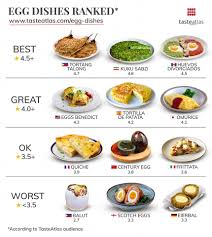Irish Stew: A Hearty Taste of Ireland
When it comes to comfort food, few dishes can rival the hearty and soul-warming qualities of Irish stew. Originating from the Emerald Isle, this iconic dish has been a staple in Irish households for centuries, offering a taste of tradition and a glimpse into the rich culinary heritage of Ireland.
At its core, Irish stew is a simple yet satisfying one-pot dish that combines tender chunks of meat, root vegetables, and aromatic herbs. Traditionally made with lamb, this stew showcases the flavors of the countryside, reflecting Ireland’s agricultural roots and reliance on locally sourced ingredients.
The key to an authentic Irish stew lies in its simplicity. The meat is typically browned to seal in its juices before being combined with onions, potatoes, carrots, and sometimes turnips or parsnips. The flavors meld together as the stew simmers slowly over low heat until the meat becomes tender and succulent.
The magic of Irish stew lies not just in its ingredients but also in the way it brings people together. In Ireland, it is often served as a communal meal during festive gatherings or family reunions. Sharing a steaming bowl of Irish stew creates an atmosphere of warmth and conviviality that epitomizes Irish hospitality.
While there are numerous variations of Irish stew across different regions and households, one thing remains constant: its ability to evoke feelings of comfort and nostalgia. Each spoonful carries with it the essence of home-cooked meals enjoyed by generations past.
In recent years, chefs have put their own twists on this traditional dish by incorporating modern techniques or experimenting with different ingredients. Some opt for using beef instead of lamb, while others add Guinness stout or herbs like thyme or rosemary to enhance the flavors further. These adaptations add new dimensions to an already beloved classic while still paying homage to its roots.
Whether enjoyed on a chilly winter evening or as a reminder of distant shores, Irish stew has earned its place as a beloved dish around the world. Its timeless appeal lies in its ability to transport us to the rolling green hills of Ireland, where cozy kitchens and warm hearths await.
So, the next time you find yourself yearning for a taste of Ireland, consider simmering a pot of Irish stew. Let its comforting aromas fill your home and its flavors transport you to a land known for its hospitality and love for good food.
7 Common Questions Answered: All About Irish Stew
- What ingredients are used to make an Irish stew?
- How long does it take to cook an Irish stew?
- Is there a difference between Irish stew and other types of stews?
- What is the origin of Irish stew?
- What vegetables go into an Irish stew?
- How do you make an authentic Irish stew recipe?
- Is there a traditional way to serve Irish stew?
What ingredients are used to make an Irish stew?
An authentic Irish stew typically includes the following ingredients:
- Meat: Traditionally, lamb is the meat of choice for Irish stew. However, beef can also be used as a substitute or in combination with lamb. The meat is usually cut into chunks, leaving some fat for added flavor.
- Potatoes: Potatoes are a quintessential ingredient in Irish cuisine, and they play a central role in Irish stew. Usually, waxy potatoes like Yukon Gold or red potatoes are used, as they hold their shape better during cooking.
- Onions: Yellow onions are commonly used to add sweetness and depth of flavor to the stew.
- Carrots: Carrots provide a touch of natural sweetness and vibrant color to the dish. They are typically sliced or diced.
- Stock or Broth: A flavorful liquid base is essential for a good stew. Traditional recipes call for lamb or beef stock, but vegetable stock can be used for vegetarian versions.
- Herbs and Seasonings: Fresh herbs such as thyme and parsley are often added to enhance the flavor profile of the stew. Salt, pepper, and bay leaves are also commonly used for seasoning.
Optional ingredients that can be added to customize the stew include:
– Turnips or parsnips: These root vegetables add earthy flavors and additional texture.
– Guinness stout: Some recipes incorporate this iconic Irish beer to deepen the richness of the stew.
– Worcestershire sauce: A small amount can be added for extra umami flavor.
– Garlic: Adding garlic cloves can provide an aromatic boost.
– Flour or cornstarch (for thickening): If desired, a slurry made from flour or cornstarch mixed with water can be added towards the end of cooking to thicken the stew.
Remember that while these ingredients form the foundation of an Irish stew, variations exist across different regions and households based on personal preferences and family traditions.
How long does it take to cook an Irish stew?
Cooking an Irish stew requires a slow and gentle simmer to allow the flavors to meld together and the meat to become tender. The cooking time can vary depending on the recipe, the cut of meat used, and personal preference. However, as a general guideline, it usually takes around 2 to 3 hours to cook an Irish stew.
The exact cooking time will depend on factors such as the size of the meat chunks, the heat level used, and how tender you want the meat to be. It’s important to remember that Irish stew is a dish that benefits from low and slow cooking, allowing the flavors to develop and intensify over time.
To achieve optimal results, start by browning the meat in batches to seal in its juices and enhance its flavor. Then add in the onions, potatoes, carrots, and other vegetables along with any herbs or seasonings. Pour in enough liquid (such as broth or water) to cover all the ingredients.
Once everything is combined in your pot or Dutch oven, bring it to a gentle simmer over low heat. Cover with a lid and let it simmer slowly for at least 1.5 to 2 hours. This will give enough time for the meat to become tender and for all the flavors to meld together beautifully.
After this initial cooking period, you can check if the meat is tender enough by testing it with a fork. If it’s not quite there yet, continue simmering for an additional 30 minutes or so until desired tenderness is achieved.
Remember that cooking times can vary based on personal preference and desired texture. Some prefer their stew with melt-in-your-mouth tender meat while others prefer it slightly firmer. Adjust your cooking time accordingly based on your taste preferences.
Ultimately, when preparing an Irish stew, patience is key. Allow yourself ample time for slow cooking so that you can fully enjoy this comforting dish at its best – rich in flavor and with melt-in-your-mouth tender meat.
Is there a difference between Irish stew and other types of stews?
Yes, there are some notable differences between Irish stew and other types of stews. While all stews share the common concept of slow-cooking ingredients in a liquid, each regional variation has its own distinguishing characteristics.
One of the primary differences lies in the choice of meat. Irish stew traditionally uses lamb as its main protein, reflecting Ireland’s sheep-rearing heritage. The lamb is typically cut into chunks and slow-cooked until tender. In contrast, other stews may use different meats such as beef, pork, or even game meats like venison.
Another distinction is the selection of vegetables. Irish stew commonly includes potatoes, carrots, onions, and sometimes turnips or parsnips. These root vegetables provide a hearty and earthy flavor to the dish. Other stews may incorporate a wider variety of vegetables depending on regional preferences and availability.
The cooking technique also sets Irish stew apart. It is typically prepared in a single pot with all the ingredients layered together and simmered slowly over low heat for an extended period. This method allows the flavors to meld together while tenderizing the meat and infusing it with rich flavors from the broth.
Furthermore, Irish stew often emphasizes simplicity in its seasoning profile. It relies on basic herbs like parsley or thyme to enhance the natural flavors of the ingredients without overpowering them. In contrast, other stews may incorporate a broader range of herbs and spices to create more complex flavor profiles.
Cultural influences also play a role in shaping different types of stews. For example, French cuisine is known for its use of wine-based broths and aromatic herbs like rosemary or bay leaves in their classic beef stews such as boeuf bourguignon or coq au vin. Similarly, Moroccan tagines feature spices like cumin, coriander, and cinnamon along with dried fruits for a unique North African flair.
While there are variations within each style of stew depending on personal preferences and regional adaptations, understanding the specific ingredients, techniques, and cultural influences can help distinguish Irish stew from other types of stews. Ultimately, each stew offers its own distinct flavors and culinary experience, reflecting the diverse traditions and tastes of different cultures around the world.
What is the origin of Irish stew?
The origin of Irish stew can be traced back to Ireland’s rich agricultural history and the availability of ingredients in the region. It is believed that Irish stew has its roots in traditional Irish peasant cooking, where resourcefulness and making the most of available ingredients were essential.
The dish emerged during a time when lamb was abundant in Ireland, thanks to the country’s thriving sheep farming industry. Lamb was a popular meat choice due to its availability and affordability. The combination of lamb with locally grown vegetables like potatoes, onions, and carrots created a nourishing and satisfying meal for families.
The simplicity of Irish stew also made it an ideal dish for rural communities. It could be cooked slowly over an open fire or in a pot hung from a hook, allowing the flavors to develop while using minimal equipment. The slow cooking process helped tenderize tougher cuts of meat, making them more palatable.
Historically, Irish stew was cooked in large cauldrons or cast-iron pots known as “Dutch ovens.” These vessels were often used by Irish families for communal meals during gatherings or celebrations. The stew would simmer for hours, allowing the flavors to meld together and create a comforting and flavorful dish.
Although lamb is the traditional meat used in Irish stew, variations using beef or mutton can also be found depending on regional preferences or ingredient availability. Over time, different households have added their own unique touches to the recipe, resulting in slight variations across Ireland.
Irish stew has become an iconic symbol of Irish cuisine and cultural heritage. Its humble origins reflect the resourcefulness and resilience of the Irish people throughout history. Today, it remains a beloved dish both within Ireland and around the world, cherished for its simplicity, heartiness, and ability to bring people together around a shared meal.
What vegetables go into an Irish stew?
An authentic Irish stew typically includes a combination of root vegetables that add flavor, texture, and depth to the dish. The most common vegetables used in Irish stew are:
- Potatoes: Potatoes are a staple ingredient in Irish cuisine and play a central role in Irish stew. They help thicken the stew and provide a hearty element to the dish.
- Onions: Onions are often sautéed before being added to the stew, imparting a sweet and savory flavor that enhances the overall taste.
- Carrots: Carrots add a subtle sweetness to the stew while providing vibrant color. They also contribute to the overall heartiness of the dish.
- Turnips or Parsnips (optional): Some variations of Irish stew include turnips or parsnips, which bring an earthy flavor and additional complexity to the dish.
These vegetables work harmoniously together, creating a balanced combination of flavors that complement the tender meat and rich broth in an Irish stew. However, it’s worth noting that recipes may vary slightly depending on personal preferences or regional influences.
How do you make an authentic Irish stew recipe?
To make an authentic Irish stew recipe, follow these steps:
Ingredients:
– 2 pounds (900 grams) of lamb shoulder, cut into chunks
– 4 tablespoons vegetable oil
– 2 onions, sliced
– 4 carrots, peeled and sliced
– 4 potatoes, peeled and cut into chunks
– 2 cloves of garlic, minced
– 2 tablespoons all-purpose flour
– 4 cups beef or lamb broth
– A handful of fresh thyme sprigs
– Salt and black pepper to taste
Instructions:
- Heat a large pot over medium heat and add the vegetable oil. Brown the lamb chunks in batches until they are nicely seared on all sides. Remove the browned meat from the pot and set it aside.
- In the same pot, add the sliced onions and sauté until they become translucent and slightly caramelized. Add the minced garlic and cook for another minute.
- Sprinkle the flour over the onions and garlic. Stir well to coat everything evenly.
- Return the browned lamb chunks to the pot with any accumulated juices. Add in the carrots, potatoes, and fresh thyme sprigs.
- Pour in enough beef or lamb broth to cover all the ingredients in the pot. Season with salt and black pepper to taste.
- Bring the stew to a boil, then reduce the heat to low. Cover with a lid and let it simmer gently for about 2 hours or until the meat is tender and falls apart easily.
- After cooking for a couple of hours, check for seasoning adjustments if needed.
- Serve hot in bowls, garnished with fresh thyme leaves if desired.
Enjoy this authentic Irish stew with crusty bread or mashed potatoes for a truly satisfying meal that captures the essence of Ireland’s culinary heritage.
Is there a traditional way to serve Irish stew?
Yes, there is a traditional way to serve Irish stew that has been passed down through generations. The stew is typically served piping hot in deep bowls or plates, accompanied by freshly baked soda bread or crusty Irish brown bread. The bread serves as the perfect vessel for sopping up the flavorful broth.
In addition to the bread, some people like to serve a side of buttered cabbage or steamed greens, such as kale or spinach, to add a fresh and vibrant element to the meal. These vegetables provide a nice contrast to the rich and hearty flavors of the stew.
Garnishing options for Irish stew can vary depending on personal preferences. Some sprinkle freshly chopped parsley or thyme over the top for added freshness and color. Others may opt for a dollop of tangy sour cream or a spoonful of whole grain mustard on the side.
Ultimately, how you choose to serve your Irish stew is up to you. The beauty of this dish lies in its versatility and adaptability. Whether enjoyed with traditional accompaniments or with your own creative twists, Irish stew is sure to warm both your body and soul.









